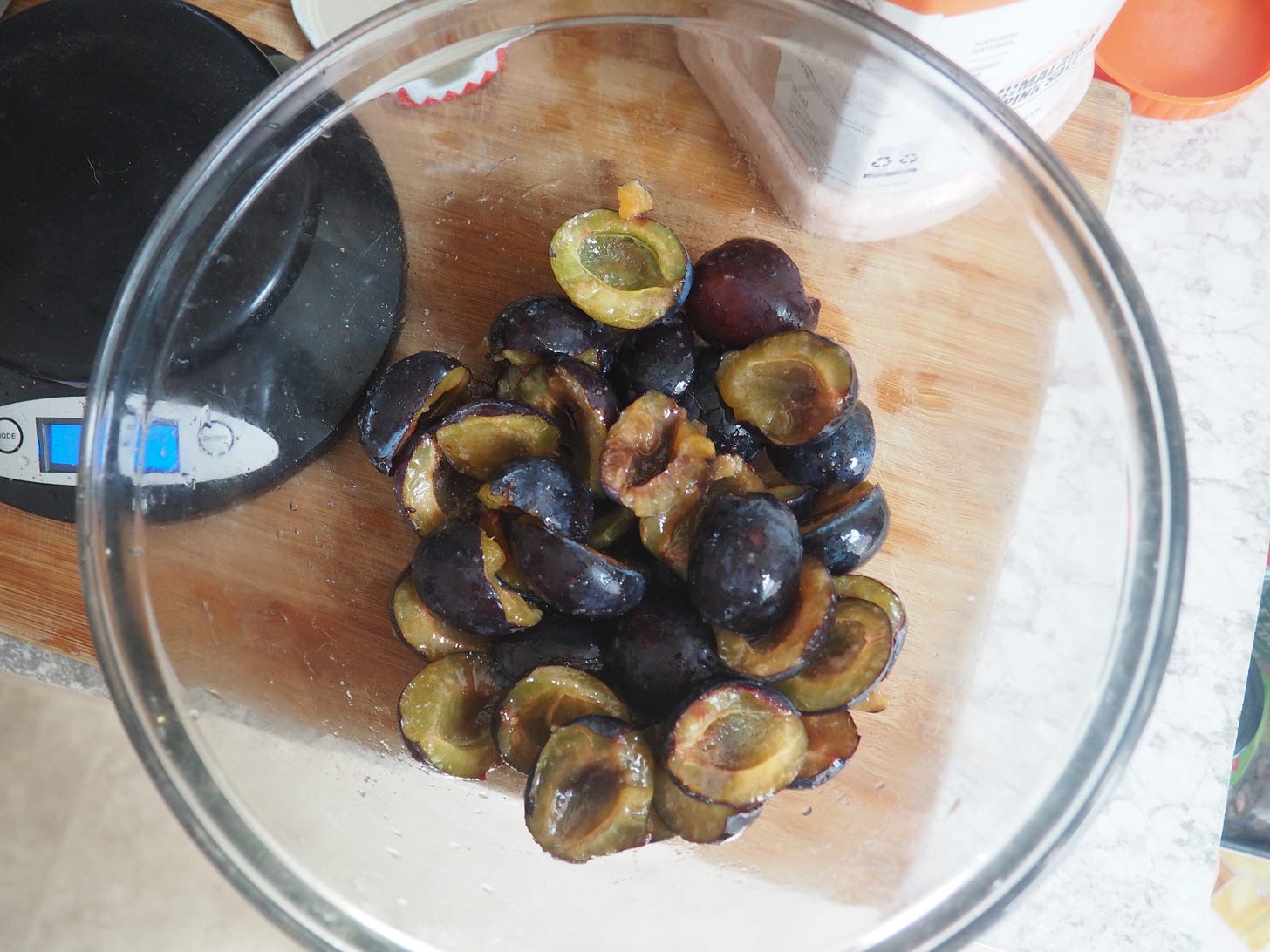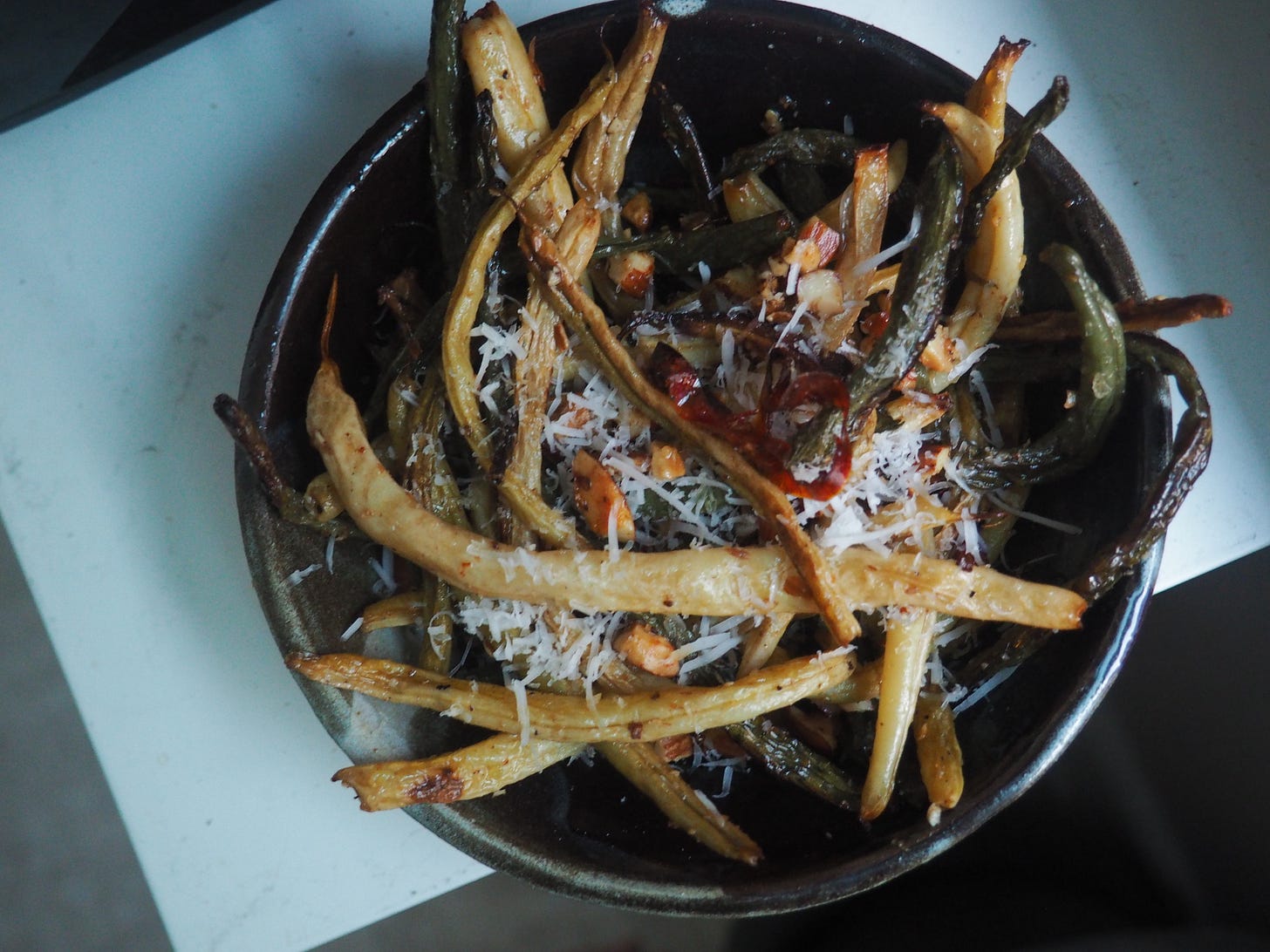foodstuff is a free reader-supported publication that releases new material twice monthly. To receive one essay and one veggie-centred recipe right to your inbox, consider becoming a subscriber. If you’re already a supporter, thank you, thank you, thank you for being here with me!!
I did some experimentation in the kitchen this month, something I’m not often willing to do, and for good reason. When failure means waste, and maybe hunger, the stakes are high.
That is to say that the prospect of playing in the kitchen can be especially fraught, certainly considering the cost of groceries right now, but always too when a basic need like food is commodified.
Constantly negotiating risk is not a particularly fun part of any creative process, though it has historically produced delicious outcomes, new flavours and skilled, though underrated, culinary experts. I’m thinking specifically about fermentation, which has, more often than not been a practice of under resourced peoples, peoples who are adept at transforming risk and precarity into skill and knowledge, with a nuanced pungency that lasts and lasts.
I’m always anxious dabbling with ferments (something about my lack of skill and the potential for exploding glass jars…) but it’s a process I want to understand more intimately. To start (again, because I’ve “started” a few times by this point) I’ve chosen a simple method for fermented fruit. I tried it out this month and, while the experiment is ongoing, I found it much less intimidating than some of the other processes I’ve seen.
The other “experiment” I conducted this month was laughably low stakes. The worst thing that could have happened was that I had to eat a side dish I wasn’t the biggest fan of. No negotiating with explosive fruits, only my own fickle preferences. Though, those have indeed ripened with time.
Experiment 1: Fruit Ferments
I wanted to start this fruit fermentation sooner so I would have results by the time this newsletter came out but the weather in Ontario has been a bit unpredictable. I was worried that the temperature fluctuations and humidity in my very temperature un-controlled apartment would have dangerous effects on the process. So I started on Monday (this newsletter came out on a Friday), meaning that this experiment is still very much in-process.
Using some plums I had, I followed the basic principles of lacto-fermentation, which are as follows:
Mix fruit with salt (2% salt to fruit ratio)
Place salty-fruit in jar
Let the salty-fruit ferment at room temperature for up to 7 days
Refrigerate
For me, this looked like:
Mix 627g of pitted plums with 13 g of pink Himalayan salt
Smashed the mixture into an old pickle jar
Let the mixture sit on my counter out of direct sunlight for 4 days as of Thursday, when I’m writing this. Currently, the mixture still needs more time. When I tested it this afternoon it was much too salty but it’s getting fizzy. The temperature those days ranged from between 14-20°C.
Refrigerated once ???? I don’t know yet!!
Experiment 2: Lemony Green Beans with a Crunch
I’ve never been a big fan of green beans. I always say that I’m not a fan of things that taste too green. Even though they’re the same thing, I hate green bell peppers and love red, orange, and yellow.
Despite it being my favourite colour, I’ve historically not really liked the way green tastes in most instances—bitter with an earthy sharpness. This might not be true, however. It might just be that I need more contrast, particularly more acidity, to please my palette!
Ingredients:
green beans, enough to cover a half sheet pan)
olive oil, a generous couple if glugs— enough to coat the beans and the pan
garlic cloves, 3-6, halved
salt, to taste
fresh cracked pepper, to taste
chilli oil, to taste. I used the oily brine from the fermented chilis that I get at Artie’s in Hamilton
almonds, chopped (or whatever nut or seed you have)
about 1/4 of a lemon
parmesan or Romano cheese (I used Fortinos vegan Romano)
flakey salt, for finishing
Method:
Wash your beans and trim the stems. Toss them onto a baking sheet lined with parchment paper. Drizzle a generous amount of olive oil and your desired amount of spicy oil. If you don’t have spicy oil, sprinkle some red pepper flakes onto the beans. Half 3-6 garlic cloves and throw them in the mix with fresh cracked pepper and salt to taste. Mix everything together and place the baking sheet in a 430 degree oven. Roast until the beans begin to brown (I like mine pretty crisp but if you prefer yours more tender then adjust the cook time accordingly). Once the beans are nearly done, add chopped raw almonds to the sheet and finish roasting until the almonds are a toasty brown colour, paying close attention as this can happen quickly.
Remove the sheet from the oven. Let cool. Squeeze about 1/4 of a lemon onto the beans, add shredded parmesan or Romano, and flakey salt. Mix. Serve.
Tell me about your experiences with fermentation or other kitchen experiments!






I don’t really like green beans much. They’re okay and I’ll eat them if served but not something I’ve gone out of my way to buy. But this recipe looks interesting. I’ll buy some this weekend to try.
I wasn't a fan of green beans because my experience with them was mostly limited to the frozen bagged variety heated in a pot with water and drained. But these green beans are popping with flavor, when I first put them into my mouth I was blown away by the crispy texture and salty flavor. This was improved by the light charring you were able to achieve through intelligent use of the broiler.
The almonds I think could be toasted separately, I'm not a fan of almonds when they start to brown too much as they get an odd flavor that displeases me. I can't wait to drink your fermented fruit water.